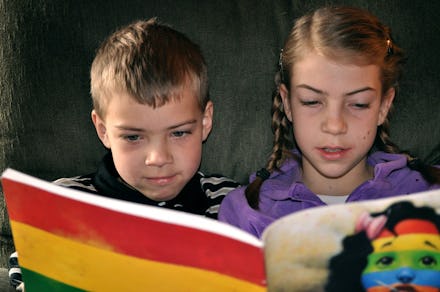Test How Fast You Can Read, Compared to the Rest of America

The award for the latest creative marketing campaign goes to Staples for their e-reader speed-reading test. The test shows a few paragraphs of texts from classic novels (War of the Worlds and Alice in Wonderland, for instance) and then gives you a short comprehension quiz to learn immediately how your speed stacks up against the rest of the country.
The results can be ... surprising.
Think you're fast? So did I, until I scored 328 words per minute — 31% above the national average, but still below the level of an 11th grade student. Not sure how I'm supposed to feel about that.
The test goes on to tell you how long it would take to read famous books based on your speed (nearly 30 hours to page through Tolstoy's War and Peace at a rate of 328 per minute). You can even see how many books you'd be able to read on a variety of e-readers before needing to recharge them.
And there's the rub. The whole thing is a gimmick meant to sell more gizmos. Just like this guy used to when we were kids:
But here's something Staples wasn't counting on: Your reading speed is actually higher on real books than e-readers.
A 2010 study revealed that the iPad elicited a 6.2% slower reading speed than old-fashioned books, while the Kindle was 10.7% slower. As far as user satisfaction was concerned, readers enjoy the printed book almost exactly as much as they enjoy e-readers.
But the test is flawed in a more important way: Comprehension also suffers when reading on electronic devices. Studies have shown that e-readers make remembering what you've read more difficult. The smaller the screen, the harder your book is to recall, so you might as well give up trying to get through Infinite Jest on your iPhone right now and go out and get a real book.
But first, face off against the rest of America and earn some bragging rights.